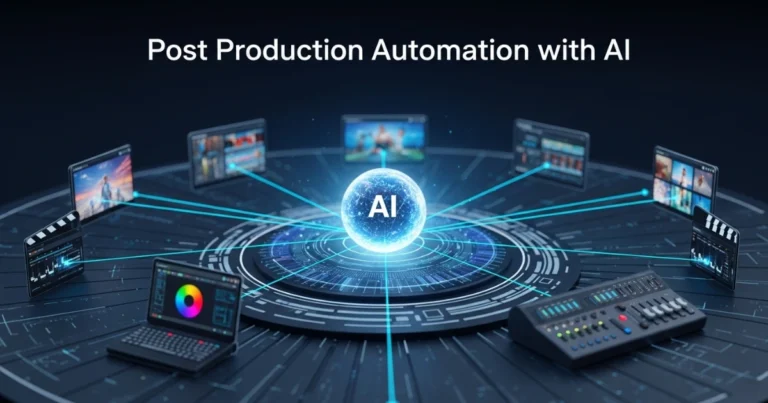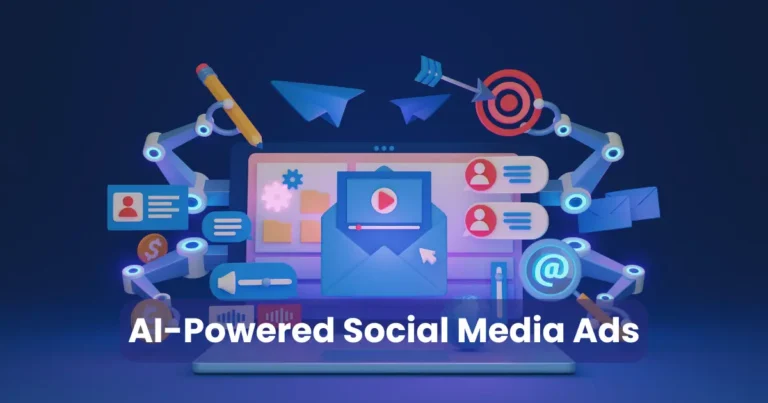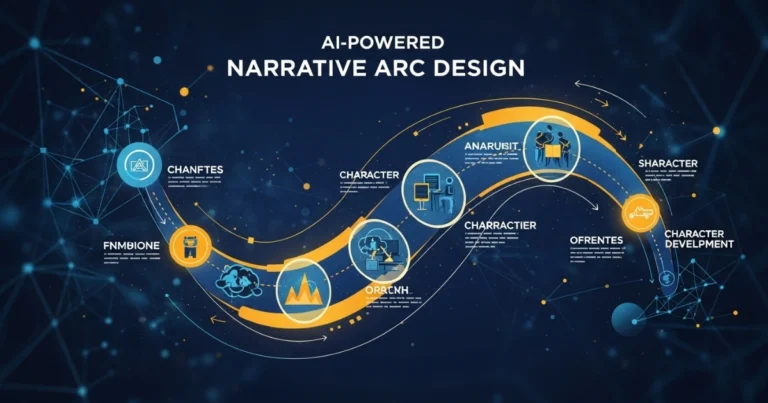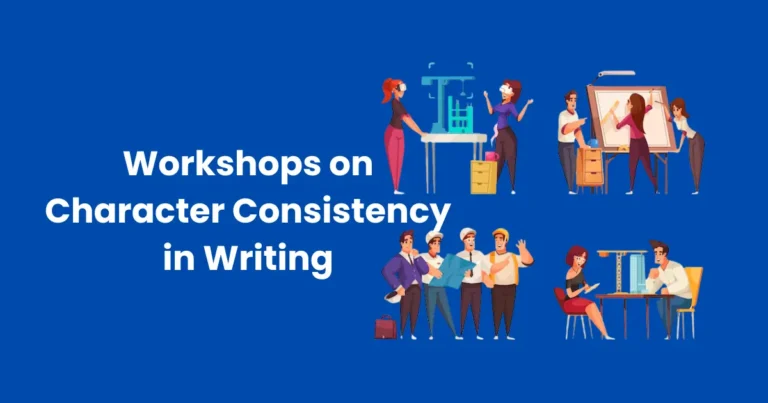AI Tools For Meta Ads | Key Features of AI Tools for Meta Ads
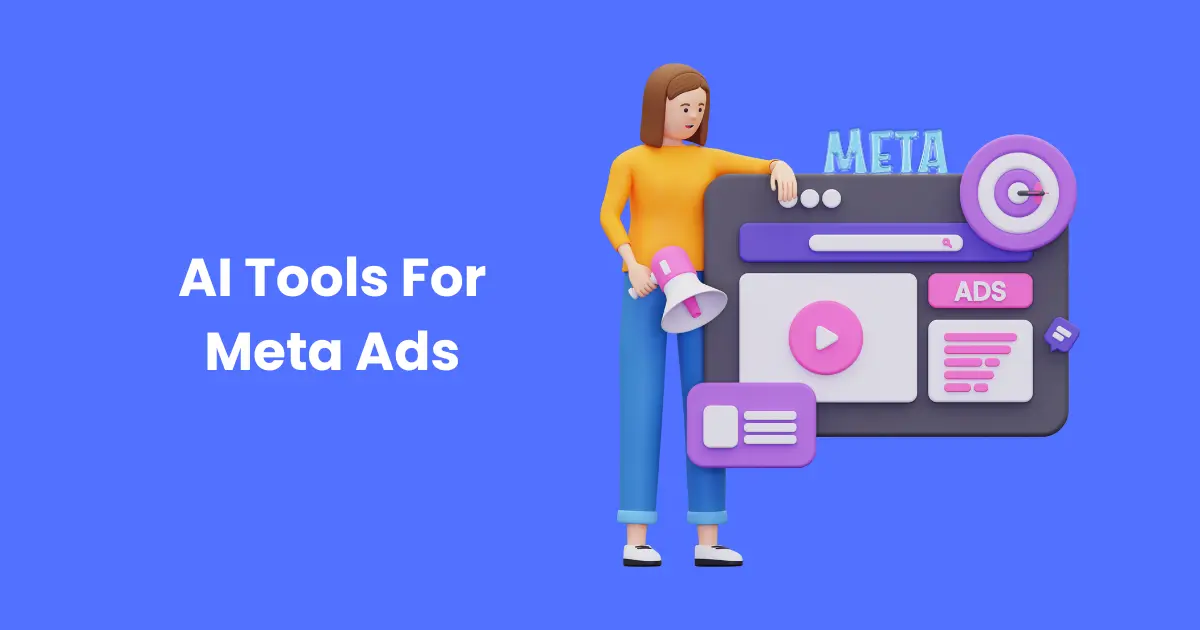
Contents
In today’s digital-first world, advertising has become more complex and competitive than ever. To stand out in this crowded landscape, businesses are increasingly turning to artificial intelligence (AI) to power their marketing efforts. Specifically, AI tools for Meta Ads have revolutionized how campaigns are created, managed, and optimized.
Meta Ads, which encompass advertising on platforms like Facebook, Instagram, and Messenger, are highly effective due to their ability to reach diverse audiences. However, the manual management of campaigns can be time-consuming and prone to errors. This is where AI tools come in—offering automation, precision, and scalability that are unmatched by traditional methods.
By leveraging AI tools for Meta Ads, businesses can benefit from features like advanced audience targeting, dynamic ad creation, and real-time performance tracking. These tools analyze vast amounts of data to predict trends, identify high-performing ad strategies, and ensure that every dollar spent delivers maximum ROI.
Whether you’re a small business owner or part of a global enterprise, adopting AI tools for Meta Ads is no longer optional—it’s essential for staying ahead in a fast-evolving market. These tools empower advertisers to focus on creative strategies while leaving the heavy lifting of data analysis and optimization to intelligent systems.
Top AI Tools for Meta Ads
The rise of AI has brought about an impressive array of tools specifically designed to enhance the performance of Meta Ads. These tools combine advanced machine learning algorithms with user-friendly interfaces, enabling advertisers to create, optimize, and scale their campaigns effectively. Here are some of the top AI tools for Meta Ads that are transforming digital advertising:

1. AdCreative.ai
Key Features:
- AI-powered ad creatives tailored to specific audiences.
- A/B testing automation to identify high-performing designs.
- Integration with Facebook Ads for seamless campaign execution.
Why It Stands Out:
AdCreative.ai generates data-backed visuals and ad copies that align with Meta’s guidelines, reducing the guesswork in crafting compelling ads.
2. Revealbot
Key Features:
- Automated budget management and bid optimization.
- Real-time performance monitoring and reporting.
- Rule-based automation to adjust campaigns dynamically.
Why It Stands Out:
Revealbot allows advertisers to set custom rules for managing campaigns, ensuring that every dollar spent on Meta Ads delivers maximum impact.
3. Pattern89
Key Features:
- Predictive analytics to forecast campaign performance.
- AI recommendations for ad placement and timing.
- Insights into trending content and formats.
Why It Stands Out:
Pattern89 uses historical data and real-time trends to optimize Meta Ads, helping businesses stay ahead of their competition.
4. Madgicx
Key Features:
- AI-driven audience segmentation for Meta Ads.
- Creative insights to boost ad engagement.
- Unified dashboard for managing campaigns across platforms.
Why It Stands Out:
Madgicx combines audience analytics with creative recommendations, making it an all-in-one solution for Meta advertising.
5. Pencil
Key Features:
- AI-generated video ads optimized for Meta platforms.
- Performance-based creative suggestions.
- Direct integration with Meta Ads Manager.
Why It Stands Out:
Pencil specializes in creating high-quality, AI-driven video ads that capture attention and drive engagement.
6. Trapica
Key Features:
- Real-time audience targeting using machine learning.
- Adaptive ad delivery based on user behavior.
- ROI tracking and optimization.
Why It Stands Out:
Trapica excels in dynamically adjusting campaigns to suit audience behavior, ensuring that Meta Ads remain relevant and cost-effective.
How AI Optimizes Meta Ads Campaigns
The integration of artificial intelligence into Meta Ads campaigns has transformed the advertising process. From audience targeting to performance optimization, AI tools for Meta Ads enhance every aspect of ad management, helping businesses achieve higher efficiency and better results. Here’s how AI works to optimize Meta Ads campaigns:

1. Advanced Audience Targeting and Segmentation
AI tools analyze vast amounts of data from Meta platforms to identify high-potential audience segments.
- Behavioral Insights: AI assesses user behaviors, interests, and demographics to create precise audience profiles.
- Predictive Targeting: Tools predict future behavior, helping advertisers focus on users most likely to convert.
- Custom Audiences: AI refines existing audience lists, ensuring campaigns reach the right people.
For example, an e-commerce brand can use AI to target shoppers who frequently browse similar products, increasing the likelihood of a sale.
2. Dynamic Ad Content Creation
Creating personalized content for multiple audience segments is time-consuming, but AI makes it seamless.
- Custom Ad Variations: AI generates multiple versions of ad creatives tailored to different audience preferences.
- Dynamic Text and Images: Tools automatically update ad elements like headlines and visuals to match user interests.
- Improved Engagement: Personalized ads resonate more with users, boosting click-through and conversion rates.
Dynamic ads created with AI can adapt to trends or user interactions, keeping content relevant and engaging.
3. Automated Bidding and Budget Allocation
AI tools for Meta Ads optimize bidding strategies to maximize ROI while minimizing costs.
- Smart Bidding: AI adjusts bids in real-time based on ad performance and audience behavior.
- Budget Reallocation: Campaign budgets are distributed dynamically across high-performing ads.
- Cost-Effective Campaigns: Advertisers save money by avoiding overspending on underperforming ads.
For example, an AI tool might prioritize funding ads targeting an audience with higher engagement, ensuring optimal resource utilization.
4. Real-Time Performance Monitoring and Optimization
AI provides advertisers with real-time insights and recommendations to improve campaign outcomes.
- Instant Feedback: Advertisers can quickly identify which ads are underperforming.
- Automated Adjustments: Tools tweak ad settings, targeting, or creatives without manual intervention.
- Performance Insights: AI offers actionable data on click-through rates, conversions, and ROI.
This proactive approach ensures campaigns remain competitive and responsive to audience behavior.
5. Predictive Analytics for Campaign Planning
AI tools use historical data and trends to forecast campaign outcomes.
- Optimized Scheduling: Ads are launched at times with the highest potential for engagement.
- Trend Analysis: AI identifies market trends and suggests strategies to capitalize on them.
- Enhanced ROI Predictions: Advertisers can estimate returns before launching campaigns.
For instance, an AI tool might recommend focusing ad spend on specific days when user activity is historically higher.
6. Automated A/B Testing
A/B testing can be tedious, but AI simplifies the process by running and analyzing tests automatically.
- Simultaneous Testing: Multiple ad variations are tested simultaneously to identify winners.
- Efficient Decision-Making: AI highlights the best-performing ads based on metrics like CTR and conversion rates.
- Faster Optimization: Campaigns are optimized in real-time, reducing delays in achieving results.
The Impact of AI Optimization
By leveraging AI tools for Meta Ads, advertisers benefit from:
- Increased campaign efficiency and reduced manual effort.
- Higher engagement rates through precise targeting and personalized content.
- Maximized ROI through smarter budget and bid management.
AI is no longer a luxury for Meta advertisers—it’s a necessity for staying competitive in the ever-evolving digital marketplace.
Key Features of AI Tools for Meta Ads
AI tools for Meta Ads are designed to enhance campaign performance, streamline workflows, and maximize ROI. These tools bring advanced capabilities to advertisers, empowering them to create and manage campaigns with precision. Here are the key features that make these tools indispensable:

1. Audience Segmentation and Targeting
AI tools excel at identifying and targeting the right audience by analyzing user behavior, interests, and demographics.
- Behavioral Analysis: Understand how users interact with Meta platforms.
- Lookalike Audiences: Identify new users with similar traits to your existing customers.
- Custom Audiences: Build detailed audience profiles based on data insights.
With advanced segmentation, advertisers can ensure that their campaigns reach the most relevant users.
2. AI-Generated Ad Creatives
Creating engaging ad content is easier with AI-driven tools that tailor designs and messages to specific audiences.
- Dynamic Content Generation: AI customizes headlines, images, and copy for different audience groups.
- Creative Insights: Receive suggestions for optimizing visuals and messaging to improve performance.
- A/B Testing Automation: Test multiple creative variations and identify the best-performing ones.
AI-generated creatives help boost engagement by aligning ad content with audience preferences.
3. Automated Budget and Bid Management
Managing campaign budgets and bids can be complex, but AI tools simplify the process by offering intelligent automation.
- Smart Bidding: Automatically adjust bids to achieve the best possible ROI.
- Budget Optimization: Allocate resources to high-performing campaigns in real time.
- Cost Control: Set limits to prevent overspending on underperforming ads.
This ensures cost-effective advertising and maximizes the value of every ad dollar spent.
4. Real-Time Performance Tracking
AI tools provide detailed performance analytics and actionable insights in real time.
- Custom Dashboards: Monitor key metrics like CTR, conversion rates, and impressions.
- Instant Alerts: Receive notifications for underperforming ads or budget anomalies.
- Data Visualization: Use easy-to-read charts and graphs to assess campaign progress.
Real-time tracking allows advertisers to make quick adjustments and optimize campaigns continuously.
5. Predictive Analytics and Insights
AI tools leverage historical data and machine learning algorithms to predict campaign outcomes.
- Trend Forecasting: Identify future market trends and user behavior patterns.
- Performance Predictions: Estimate how campaigns will perform before launch.
- Audience Insights: Uncover new opportunities for targeting and segmentation.
Predictive analytics enables advertisers to make data-driven decisions with confidence.
6. Cross-Platform Integration
Most AI tools for Meta Ads integrate seamlessly with other platforms, enhancing usability and functionality.
- CRM Integration: Connect with customer relationship management tools for deeper audience insights.
- E-Commerce Platforms: Sync with online stores to track purchases and conversions.
- Multi-Channel Campaigns: Manage Meta Ads alongside campaigns on other platforms like Google or LinkedIn.
This feature ensures a unified advertising strategy across multiple channels.
7. Automated Reporting and Insights
Save time with comprehensive reports that highlight key takeaways and performance metrics.
- Customizable Reports: Tailor reports to focus on metrics that matter to your business.
- AI Summaries: Receive easy-to-understand insights and actionable recommendations.
- Scheduled Delivery: Automate report generation and sharing with stakeholders.
Automated reporting helps teams stay informed and aligned without manual effort.
Why These Features Matter
The key features of AI tools for Meta Ads make it easier to navigate the complexities of digital advertising. By automating tedious tasks, optimizing performance, and providing valuable insights, these tools empower businesses to achieve their advertising goals more efficiently and effectively.
Challenges of Using AI Tools for Meta Ads
While AI tools offer immense potential to optimize Meta Ads campaigns, they are not without challenges. Advertisers must navigate these hurdles to fully leverage the capabilities of AI tools for Meta Ads. Below are the most common challenges and ways to address them:

1. Data Dependency and Privacy Concerns
AI tools heavily rely on user data to provide accurate targeting and personalization. However, data privacy regulations, such as GDPR and CCPA, can limit the information available to these tools.
- Challenge: Restricted access to data can affect AI’s ability to create effective campaigns.
- Solution: Focus on first-party data collection and ensure compliance with privacy laws to build trust with your audience.
2. Complexity of Integration
Integrating AI tools into existing workflows and Meta Ads campaigns can be technically challenging.
- Challenge: Tools often require compatibility with CRM systems, ad platforms, and other software, which can lead to integration difficulties.
- Solution: Choose AI tools with robust support and seamless integration capabilities. Consulting technical experts can also help smooth the transition.
3. High Initial Investment
Many AI tools for Meta Ads come with substantial costs, especially for advanced features and enterprise-level solutions.
- Challenge: Small businesses or startups may find it challenging to justify the expense.
- Solution: Start with affordable or free tools that offer essential features, then scale up as your advertising budget increases.
4. Over-Reliance on Automation
While automation is a strength of AI, excessive reliance on it can lead to missed opportunities for creative innovation.
- Challenge: Automated processes may lack the human touch needed to connect with audiences emotionally.
- Solution: Use AI to handle repetitive tasks and data analysis but involve human creativity in crafting ad content and strategies.
5. Learning Curve for Teams
Adopting AI tools often requires teams to learn new skills and adapt to updated workflows.
- Challenge: Limited knowledge of AI functionalities can delay implementation and reduce efficiency.
- Solution: Invest in training programs and support resources to help your team understand and maximize the tool’s potential.
6. Accuracy of Predictive Analytics
AI tools for Meta Ads rely on historical data and algorithms, which may not always accurately predict future trends or behaviors.
- Challenge: External factors, such as sudden market shifts or unexpected events, can render predictions inaccurate.
- Solution: Use AI predictions as a guide rather than a guarantee and supplement them with real-time monitoring and adjustments.
7. Ethical Considerations
AI-driven advertising can sometimes raise ethical concerns, especially when targeting vulnerable audiences.
- Challenge: Over-targeting or manipulation can harm brand reputation and breach ethical advertising guidelines.
- Solution: Adopt transparent advertising practices and prioritize ethical use of AI tools to maintain customer trust.
8. Limited Customization Options
Some AI tools have predefined settings and templates, which may not align with a brand’s unique needs.
- Challenge: Lack of flexibility can restrict creativity and customization in ad campaigns.
- Solution: Choose tools that allow for significant customization and provide API access for tailored solutions.
Future Trends in AI and Meta Advertising
The evolution of AI tools is reshaping how advertisers approach campaigns on Meta platforms. As technology advances, new trends are emerging that promise to revolutionize the landscape of digital advertising. Below are the most significant future trends in AI and Meta advertising:

1. Hyper-Personalized Advertising
AI is increasingly capable of delivering tailored ads to individual users based on detailed data analysis.
- Trend: Ads will move beyond demographic targeting to include behavioral, emotional, and real-time data.
- Impact: Brands can create highly relevant ads that resonate with users, improving engagement and conversion rates.
2. Enhanced AI-Driven Creative Generation
AI tools are advancing in their ability to create sophisticated ad creatives, including videos, animations, and interactive content.
- Trend: Generative AI will produce entire ad campaigns, from copywriting to visual assets, with minimal human intervention.
- Impact: This will reduce creative bottlenecks, allowing faster campaign rollouts and more frequent updates.
3. Voice and Conversational Advertising
With the rise of voice search and smart assistants, AI tools will enable brands to create voice-based ad campaigns.
- Trend: Conversational AI will integrate with Meta platforms to deliver ads through voice interactions and chatbots.
- Impact: Brands will engage users in a more interactive and personalized manner, enhancing customer experiences.
4. Predictive Customer Journey Mapping
AI will map out customer journeys with greater accuracy by analyzing multiple data points across platforms.
- Trend: Tools will predict where users are in their buying journey and serve ads that cater to their specific stage.
- Impact: Marketers can align ad campaigns with customer intent, driving higher ROI.
5. AI-Enhanced Real-Time Bidding
Programmatic advertising will see even more sophistication as AI refines real-time bidding (RTB) processes.
- Trend: Algorithms will predict bid outcomes with greater accuracy, optimizing ad placements in milliseconds.
- Impact: This ensures advertisers get the best value for their budget while improving ad visibility.
6. Integration of AR/VR in Meta Ads
Augmented Reality (AR) and Virtual Reality (VR) will become central to advertising on Meta platforms.
- Trend: AI tools will create immersive AR/VR ad experiences tailored to user preferences.
- Impact: These experiences will boost user engagement, making ads more interactive and memorable.
7. Sustainability in Advertising
Consumers are becoming more eco-conscious, and AI will play a role in creating sustainable ad practices.
- Trend: AI will analyze ad delivery methods to reduce environmental impact and optimize digital carbon footprints.
- Impact: Brands that prioritize sustainability will attract environmentally conscious audiences.
How to Choose the Right AI Tools for Meta Ads
Selecting the right AI tools for Meta Ads is critical for achieving your advertising goals. The tools you choose should align with your business objectives, budget, and technical capabilities. Here’s a step-by-step guide to help you make an informed decision:

1. Define Your Advertising Goals
Start by identifying what you want to achieve with your Meta Ads campaigns.
- Key Considerations:
- Are you aiming to increase brand awareness, drive traffic, or boost conversions?
- Do you need tools for creative generation, audience targeting, or performance analytics?
- Example: If audience targeting is a priority, choose tools with advanced segmentation and behavioral analysis features.
2. Evaluate Your Budget
Different AI tools come with varying price points, from free versions to premium enterprise solutions.
- Key Considerations:
- What is your monthly budget for AI tools?
- Are there affordable options that offer essential features?
- Example: Small businesses may start with free or low-cost tools like Adzooma, while larger enterprises might invest in platforms like Albert AI.
3. Analyze Core Features
Ensure the AI tool has features that match your campaign requirements.
- Key Features to Look For:
- Predictive analytics for ad performance.
- Automated A/B testing.
- Real-time optimization for ad placements.
- Integration with Meta Ads Manager and other platforms.
- Tip: Choose tools that allow customization and have an intuitive interface for ease of use.
4. Check Integration Capabilities
Your chosen tool should integrate seamlessly with Meta Ads and other platforms you use.
- Key Considerations:
- Does the tool support API connections to Meta Ads Manager?
- Can it integrate with your CRM or analytics software?
- Example: Tools like Smartly.io excel in integration, offering a unified dashboard for managing Meta Ads alongside other advertising platforms.
5. Assess AI Expertise Requirements
Consider your team’s technical knowledge and the learning curve of the tool.
- Key Considerations:
- Is the tool user-friendly for non-technical team members?
- Does it provide training resources or customer support?
- Example: Platforms like AdEspresso are beginner-friendly, while advanced tools like AdRoll may require more expertise.
Conclusion
AI tools for Meta Ads have transformed digital advertising by streamlining processes, enhancing targeting precision, and delivering exceptional results. By leveraging the right tools, businesses can:
- Optimize ad performance through real-time data analysis and automation.
- Create engaging campaigns with AI-generated content tailored to specific audiences.
- Maximize ROI with predictive analytics and advanced bidding strategies.
However, selecting the right tool requires careful consideration of your goals, budget, and technical requirements. As Meta continues to expand its advertising ecosystem, staying updated with the latest AI trends and tools will be critical to maintaining a competitive edge.
Whether you’re a small business or a large enterprise, integrating AI tools for Meta Ads into your strategy can significantly enhance your advertising efforts and drive measurable success. By embracing this technology, you’re not just adapting to the future of advertising—you’re actively shaping it.

